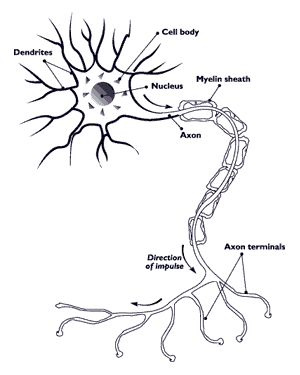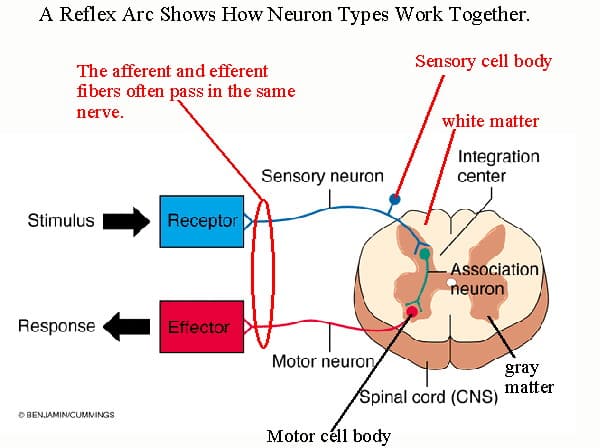The nervous system is an elaborate communication system that functions to regulate the actions of your body to maintain the internal environment within safe limits
Nerve Cells:
Glial cells – non-neuronal cells that provide support and nutrition, maintain homeostasis, form myelin, and participate in signal transmission in the nervous system.
Functions:
– surround neurons and hold them in place
– supply nutrients and oxygen to neurons
– insulate one neuron from another,
– to destroy pathogens and remove dead neurons.
Neurons – conduct nerve impulses
Three types:
1. sensory neurons (afferent neurons) – carry nerve impulses from sensory receptors to the CNS
2. interneurons – connect afferent and efferent neurons
3. motor neurons (efferent neurons)– carry nerve impulses from CNS to effectors to produce responses; muscles, organs, glands
Neuron Anatomy:
> dendrites – receive information and conduct nerve impulses toward the cell body
> axon – projects nerve impulses from the cell body toward other neurons or effectors; covered with a glistening white coat of a fatty protein called the myelin sheath
> myelin sheath –created by glial cells called Schwann cells; insulates by preventing the loss of charged ions from the nerve cell; areas between sections of the myelin sheath are known as the nodes of Ranvier
> nodes of Ranvier – causes nerve impulses to jump from one node to another, thereby speeding the movement of nerve impulses
> neurilemma – surrounds the axon of PNS neurons and promotes the regeneration of damaged axons; not all nerve cells contain neurolimma
The Reflex Arc: The Simplest Nerve Pathway
i) Receptors send sensory information to sensory neurons
ii) Sensory neurons passes the impulse to interneurons
iii) Interneurons relay the impulse to motor neuron causing the effector to respond
> happens very quickly
> reflex is involuntary and often unconscious
> occurs without brain coordination

